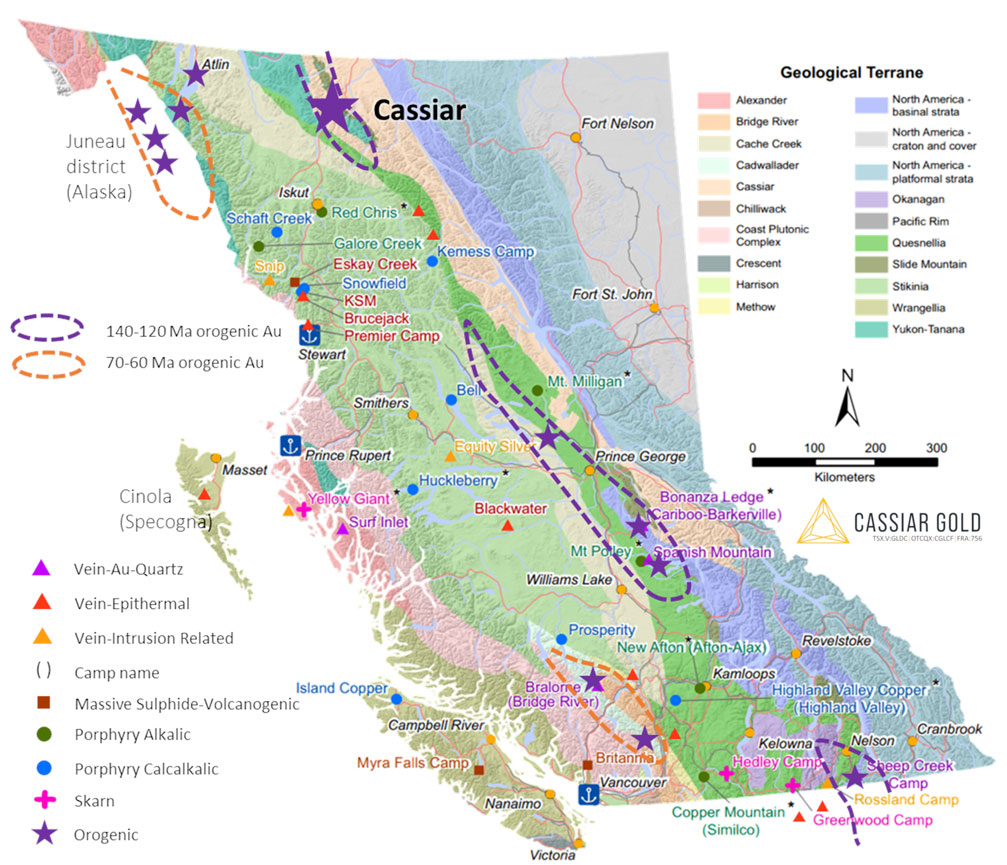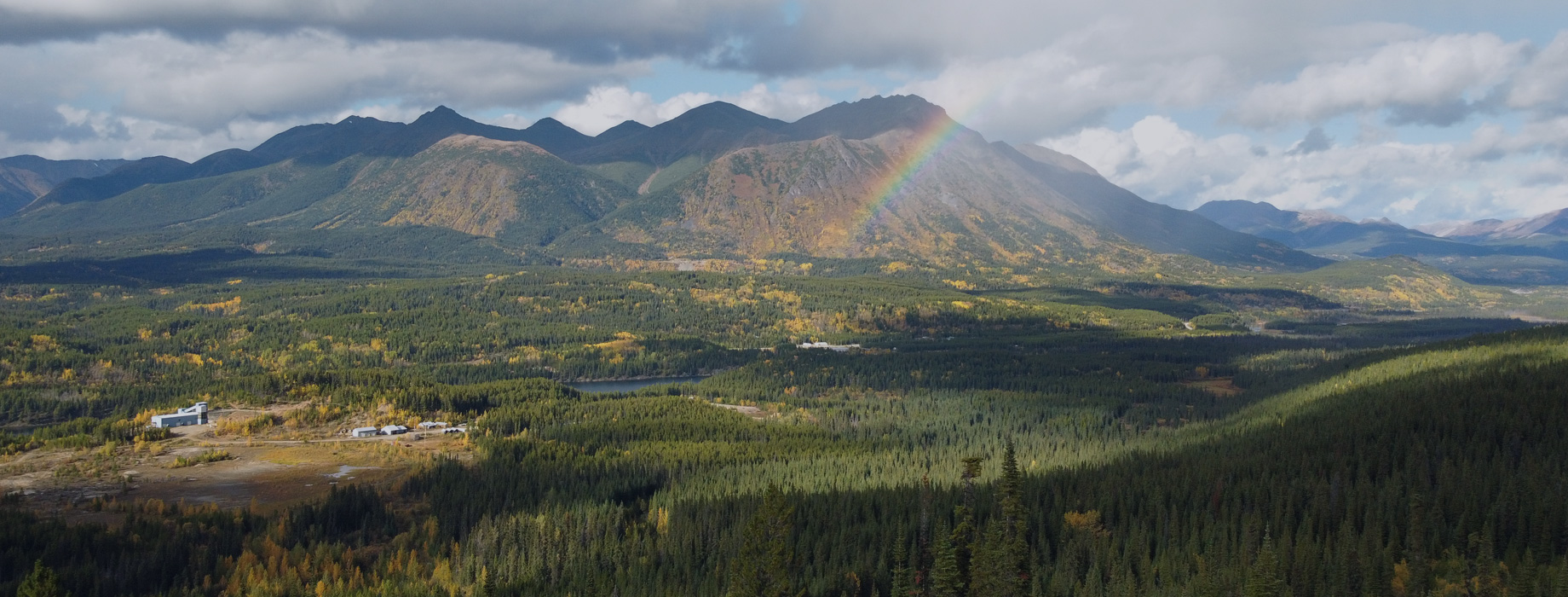WHY OROGENIC GOLD?*
Click HERE for David Rhys’ report on Orogenic gold mineralization of the eastern Cordilleran gold belt, British Columbia.
- The significance of orogenic gold deposits is well known. Globally, they account for about 2700 million ounces, or 30%, of known gold (based on past-production, resources and reserves, to 2014 (Allan, 2018)). Orogenic gold dominates gold production in Canada, Australia, Africa, Russia and China.
- In Canada, over 80% of gold comes from this style of deposit, with the Abitibi region alone contributing over 180 million ounces of gold. In British Columbia, 45% of historic lode gold production (to 2002) and almost all the province’s historic placer gold production can be attributed to orogenic gold mineralization (Schroeter, 2003).
- Orogenic deposits form during regional, continent-building tectonic episodes as opposed to being associated with hydrothermal fluids related to intrusive activity. This style of deposit can produce high-grade veins as well as low-grade, bulk-tonnage deposits. Historically, development was restricted to high-grade veins but as technology and metal prices have changed, exploration has targeted bulk-tonnage mineralization, with many of these deposits coming into production in recent years (i.e. Canadian Malartic). Numerous excellent publications exist describing various aspects of orogenic gold mineralization, including Allan (2018), Dubé and Gosselin (2007) and Goldfarb et al (2001).
- The Cassiar Gold district is located on an inland orogenic gold belt with other known districts such as the Cariboo-Barkerville district and the Sheep Creek district.


